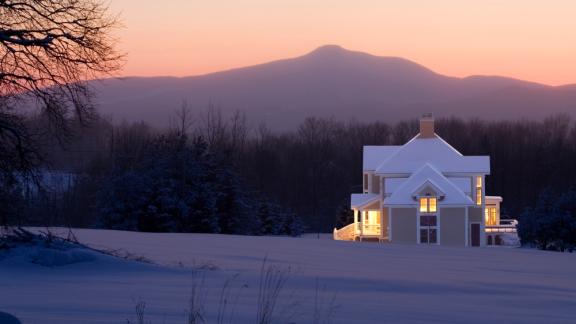Their main purpose is to prevent the sudden release of snow and ice from your roof known as a roof avalanche.
Roof pitch for snowy climates.
The purpose of pitching a roof is to enable water and snow to run off so the greater the amount of rain and or snow an area receives the greater the amount of pitch needed for the roof.
Hipped roofs are often used in complex roof formations with the hips facing different directions.
Any pitch higher than 9 12 is considered a steep pitch.
Often it is not the amount of snow but repeated freeze thaw cycles that causes trouble on a low sloped shingled roof.
I ve been an architect in ma for 38 years and in this climate i would only use a 4 12 pitch over an unheated space or open porch.
Roofs oriented north and south have the worst problems with these types of ice dams.
Avoid roof designs and proximity to natural topography that cause shading which can lead to snow accumulation and ice damming.
To reduce the likelihood of ice dams roofs should be oriented east and west to promote even heating and cooling of the snow.
Then some areas suffer from heavy snow and colder climates which also require special roofing considerations.
A minimum slope of 1 inch per foot is recommended in snow country.
When you live in an area that is prone to cold and snow you want the best roof materials for cold climates that you can get.
If you are adding an addition to your home or installing skylights knowing the.
The standing seam metal roof on this ice hockey rink leaked like a sieve a few weeks after the first snow arrived.
A pitched roof works well in any climate and is the most common roofing style.
Both slate and tile roofs are very heavy which shouldn t prevent you from using these upscale options however.
Pitched roofs including gabled and hipped roofs are the most common types in the united states.
If you live somewhere that has the potential for wildfires you want a fire resistant roof.
The 1 4 inch per foot slope was not adequate.
Snow bars or guards.
Roofs in the midwest and other cold areas will lie under heavy piles of snow for months.
These distinctive roofs with overhanging eaves feature four medium pitched sides and are characteristic of dutch architecture and help disperse snow loads in northern climates.

